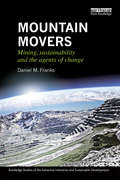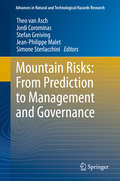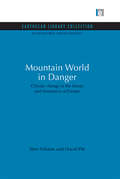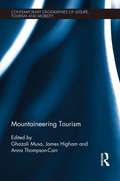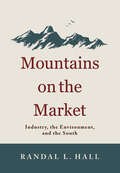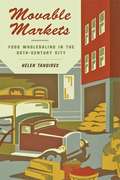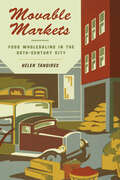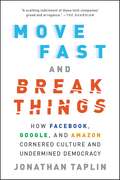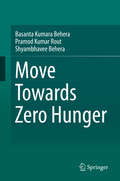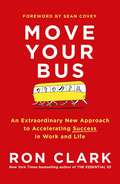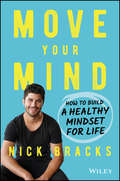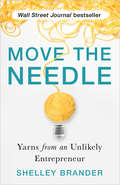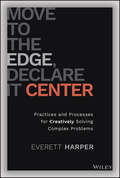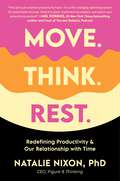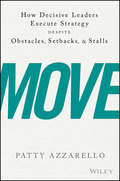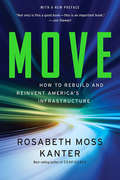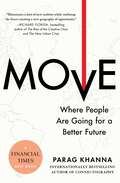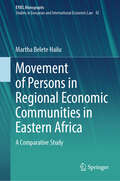- Table View
- List View
Mountain Man Brewing Co.: Bringing the Brand to Light
by Heide AbelliChris Prangel, a recent MBA graduate, has returned home to West Virginia to manage the marketing operations of the Mountain Man Beer Company, a family-owned business he stands to inherit in five years. Mountain Man brews just one beer, Mountain Man Lager, also known as "West Virginia's beer" and popular among blue-collar workers. Due to changes in beer drinkers' taste preferences, the company is now experiencing declining sales for the first time in its history. In response, Chris wants to launch Mountain Man Light, a "light beer" formulation of Mountain Man Lager, in the hope of attracting younger drinkers to the brand. However, he encounters resistance from senior managers. Mountain Man Lager's brand equity is a key asset for Mountain Man Brewing Company. The question is whether Mountain Man Light will enhance it, detract from it, or irreversibly damage it.
Mountain Man Brewing Co.: Bringing the Brand to Light
by Heide AbelliChris Prangel, a recent MBA graduate, has returned home to West Virginia to manage the marketing operations of the Mountain Man Beer Company, a family-owned business he stands to inherit in five years. Mountain Man brews just one beer, Mountain Man Lager, also known as "West Virginia's beer" and popular among blue-collar workers. Due to changes in beer drinkers' taste preferences, the company is now experiencing declining sales for the first time in its history. In response, Chris wants to launch Mountain Man Light, a "light beer" formulation of Mountain Man Lager, in the hope of attracting younger drinkers to the brand. However, he encounters resistance from senior managers. Mountain Man Lager's brand equity is a key asset for Mountain Man Brewing Company. The question is whether Mountain Man Light will enhance it, detract from it, or irreversibly damage it.
Mountain Movers: Mining, Sustainability and the Agents of Change (Routledge Studies of the Extractive Industries and Sustainable Development)
by Daniel M. FranksThe products of mining are everywhere – if it wasn’t grown, it was mined or drilled. But the mining industry has a chequered past. Pollution, human rights abuses, and corruption have tarnished the reputation of the industry across the globe. Over a decade ago the major mining companies embraced the concept of sustainable and equitable development and embarked on an explicit process of reform – but has the industry actually changed? This book explores the dynamics of change-making for sustainable development in the resources sector, specifically the mining of mineral and energy resources. The author recounts the stories and insights of over forty change-makers both inside and outside the industry, from anti-mining activists to the professionals charged with the task of reform, introducing the people who are moving an industry that moves mountains. The book takes stock of what has worked and what has not, analyzing the relative influence and dynamics of the key corporate, civil society and government actors with a view to developing new approaches for improving environmental and social outcomes from mineral and energy development. Illustrated with case studies from Angola, Australia, Brazil, Canada, Chile, Colombia, El Salvador, Guinea, Peru, The Philippines, Romania, Sierra Leone, South Africa, and The United States of America, and brimming with the backstories to the major sustainability initiatives, Mountain Movers reveals where progress has been made and where reform is still needed towards a more sustainable and equitable mining industry.
Mountain Risks: From Prediction to Management and Governance
by Stefan Greiving Theo Van Asch Jordi Corominas Jean-Philippe Malet Simone SterlacchiniThis book offers a cross disciplinary treatment of the rapidly growing field of integrated approaches in risk assessment in mountainous areas. All major aspects related to hazard and risk assessment, risk management, and governance are illustrated with a wide range of case studies. The first part of the book focuses on new techniques for assessing the natural hazards of different types of mass movements. State-of-the-art techniques for morphological characterization and monitoring of displacements are described. Computational advances are covered to explain the process systems and to quantify the hazards of fast and slow-moving landslides. In the second part of the book methodologies are included for assessing the impact of these natural hazards on the society in terms of risks. In this part, methodologies for defining the vulnerability of the elements at risk are shown and the use of run-out models for risk assessment of the dangerous rapid mass movements are evaluated. The third part of the book focuses on the response of society towards the problems of hazard and risk. It highlights the role of spatial planning, early warning systems and evacuation plans for risk management. It establishes practical thresholds for acceptable and tolerable risks and emphasizes the importance of education and communication to society. Audience The book is of interest to a wide range of experts from related disciplines, practitioners and stakeholders to demonstrate the importance of an integrated approach for all aspects of risks in mountainous areas.
Mountain Tourism: Experiences, Communities, Environments and Sustainable Futures
by Michael Hall Peter Williams John Hull Kathleen Scherf Dr Michael Lück Lluis Prats Harold Richins Aurelia Kogler Marit Engeset Joel Schmidt Senija Causevic Farhad Moghimehfar Umberto Martini Baikuntha Acharya Simon Milne Anne Terwiel Tracey J Dickson Emmanuelle George-Marcelpoil Sydney Johnsen Michael Volgger Billy Colins Elizabeth Halpenny Peet van der Merwe Axel Dreyer Anita Zehrer Robin Reid Sanjay Nepal Robert Hood Thorvardur AransonMountains have long held an appeal for people around the world. This book focusses on the diversity of perspectives, interaction and role of tourism within these areas. Providing a vital update to the current literature, it considers the interdisciplinary context of communities, the creation of mountain tourism experiences and the impacts tourism has on these environments. Including authors from Europe, Asia-Pacific and North America, the development, planning and governance issues are also covered.
Mountain Tourism: Experiences, Communities, Environments and Sustainable Futures
by Michael Hall Peter Williams Kathleen Scherf Dr Michael Lück Lluis Prats Aurelia Kogler Marit Engeset Joel Schmidt Senija Causevic Farhad Moghimehfar Umberto Martini Baikuntha Acharya Simon Milne Anne Terwiel Tracey J Dickson Sydney Johnsen Michael Volgger Billy Colins Elizabeth Halpenny Peet van der Merwe Axel Dreyer Anita Zehrer Robin Reid Sanjay Nepal Robert Hood Thorvardur Aranson Emmanuelle GeorgeMountains have long held an appeal for people around the world. This book focusses on the diversity of perspectives, interaction and role of tourism within these areas. Providing a vital update to the current literature, it considers the interdisciplinary context of communities, the creation of mountain tourism experiences and the impacts tourism has on these environments. Including authors from Europe, Asia-Pacific and North America, the development, planning and governance issues are also covered.
Mountain World in Danger: Climate change in the forests and mountains of Europe (Sustainable Development Set)
by Sten Nilsson David PittThe changing climate, the warming of the world and acid rain are among the greatest problems facing us at the end of the twentieth century. This book describes, for the first time, the effects of these phenomena on the high mountains and the forests of Europe. Mountains and the frozen regions (the cryosphere) not only play a major part in our climatic system, but are also central to our water supplies. Yet our glaciers are shrinking, our lakes and soils are becoming acidified, our forests are damaged and the whole fragile ecosystem of ranges like the Alps and the Caucasus is threatened. Nilsson and Pitt present the evidence and assess the probable effects of these changes on mountain society, tourism, water, flora and fauna. They also examine the uncertainties. Above all they look, too, at the best possible strategies in response to What is happening and at what the next steps should be. Originally published in 1991
Mountaineering Tourism (Contemporary Geographies of Leisure, Tourism and Mobility)
by James Higham Anna Thompson-Carr Ghazali MusaIn May 1993 the British Mountaineering Council met to discuss the future of high altitude tourism. Of concern to attendees were reports of queues on Everest and reference was made to mountaineer Peter Boardman calling Everest an ‘amphitheater of the ego’. Issues raised included environmental and social responsibility and regulations to minimize impacts. In the years that have followed there has been a surge of interest in climbing Everest, with one day in 2012 seeing 234 climbers reach the summit. Participation in mountaineering tourism has surely escalated beyond the imagination of those who attended the meeting 20 years ago. This book provides a critical and comprehensive analysis of all pertinent aspects and issues related to the development and the management of the growth area of mountaineering tourism. By doing so it explores the meaning of adventure and special reference to mountain-based adventure, the delivering of adventure experience and adventure learning and education. It further introduces examples of settings (alpine environments) where a general management framework could be applied as a baseline approach in mountaineering tourism development. Along with this general management framework, the book draws evidence from case studies derived from various mountaineering tourism development contexts worldwide, to highlight the diversity and uniqueness of management approaches, policies and practices. Written by leading academics from a range of disciplinary backgrounds, this insightful book will provide students, researchers and academics with a better understanding of the unique aspects of tourism management and development of this growing form of adventure tourism across the world.
Mountains on the Market: Industry, the Environment, and the South (New Directions In Southern History Ser.)
by Randal L. Hall“This is a landmark not only of Appalachian history but of southern economic and environmental history as well.” —John C. Inscoe, author of Race, War, and Remembrance in the Appalachian SouthManufacturing in the Northeast and the Midwest pushed the United States to the forefront of industrialized nations during the early nineteenth century; the South, however, lacked the large cities and broad consumer demand that catalyzed changes in other parts of the country. Nonetheless, in contrast to older stereotypes, southerners did not shun industrial development when profits were possible. Even in the Appalachian South, where the rugged terrain presented particular challenges, southern entrepreneurs formed companies as early as 1760 to take advantage of the region’s natural resources.In Mountains on the Market: Industry, the Environment, and the South, Randal L. Hall charts the economic progress of the New River Valley in the Blue Ridge Mountains of southwestern Virginia, which became home to a wide variety of industries. By the start of the Civil War, railroads had made their way into the area, and the mining and processing of lead, copper, and iron had long been underway. Covering 250 years of industrialization, environmental exploitation, and the effects of globalization, Mountains on the Market situates the New River Valley squarely in the mainstream of American capitalism.“Southernists will now refer to this book first in thinking about the historical development of the extractive industries, their impact on the environment, and what it tells us about the South.” —David Brown, coauthor of Race in the American South: From Slavery to Civil Rights“An excellent microhistory of an understudied region of the Appalachian South.” —North Carolina Historical Review
Movable Markets: Food Wholesaling in the Twentieth-Century City (Hagley Library Studies in Business, Technology, and Politics)
by Helen Tangires<p>In nineteenth-century America, municipal deregulation of the butcher trade and state-incorporated market companies gave rise to a flourishing wholesale trade. In Movable Markets, Helen Tangires describes the evolution of the American wholesale marketplace for fresh food, from its development as a bustling produce district in the heart of the city to its current indiscernible place in food industrial parks on the urban periphery. <p>Tangires follows the middlemen, those intermediaries who became functional necessities as the railroads accelerated the process of delivering perishable food to the city. Tracing their rise and decline in the wake of a deregulated food economy, she asks: How did these people, who occupied such key roles as food distributors and suppliers to the retail trade, end up exiled to urban outskirts? Moving into the early twentieth century, she explains how progressive city planners and agricultural economists responded to anxieties about the high cost of living, traffic congestion, and disruptions in the food supply by questioning the centrality, aging infrastructure, and organizational structure of wholesale markets. <p>Tangires combines economic and cultural history by analyzing popular literature, innovative scholarship, and USDA publications. Detailing the legal, physical, and organizational means behind the complex exodus of food wholesaling from the urban core, Tangires also reveals how the trade adjusted to life beyond the city limits as it created new channels of distribution, product lines, and markets. Readers interested in US history, city and regional planning history, food history, and public policy, as well as anyone curious about the disappearance of the central produce district as a major component of the city, will find Movable Markets a fascinating read.</p>
Movable Markets: Food Wholesaling in the Twentieth-Century City (Hagley Library Studies in Business, Technology, and Politics)
by Helen TangiresThe untold story of America's wholesale food business.In nineteenth-century America, municipal deregulation of the butcher trade and state-incorporated market companies gave rise to a flourishing wholesale trade. In Movable Markets, Helen Tangires describes the evolution of the American wholesale marketplace for fresh food, from its development as a bustling produce district in the heart of the city to its current indiscernible place in food industrial parks on the urban periphery.Tangires follows the middlemen, those intermediaries who became functional necessities as the railroads accelerated the process of delivering perishable food to the city. Tracing their rise and decline in the wake of a deregulated food economy, she asks: How did these people, who occupied such key roles as food distributors and suppliers to the retail trade, end up exiled to urban outskirts? Moving into the early twentieth century, she explains how progressive city planners and agricultural economists responded to anxieties about the high cost of living, traffic congestion, and disruptions in the food supply by questioning the centrality, aging infrastructure, and organizational structure of wholesale markets. Tangires combines economic and cultural history by analyzing popular literature, innovative scholarship, and USDA publications. Detailing the legal, physical, and organizational means behind the complex exodus of food wholesaling from the urban core, Tangires also reveals how the trade adjusted to life beyond the city limits as it created new channels of distribution, product lines, and markets. Readers interested in US history, city and regional planning history, food history, and public policy, as well as anyone curious about the disappearance of the central produce district as a major component of the city, will find Movable Markets a fascinating read.
Move "Northeast": Designing Value-Creating Deals
by David A. Lax James K. SebeniusSome of the most important work in negotiation takes place "on the drawing board," with parties trying to create value, not only for themselves, but for other parties as well. This chapter examines the possibility that if north is the direction I want to go, and east is the direction you want to go, then moving northeast may represent the best possible deal.
Move Fast and Break Things: How Facebook, Google, and Amazon Cornered Culture and Undermined Democracy (Expert Thinking Ser.)
by Jonathan TaplinMove Fast and Break Things tells the story of how a small group of libertarian entrepreneurs began in the 1990s to hijack the original decentralized vision of the Internet, in the process creating three monopoly firms-Facebook, Amazon and Google-that now determine the future of the music, film, television, publishing and news industries. Taplin offers a succinct and powerful history of how online life began to be shaped around the values of the men who founded these companies, including Peter Thiel and Larry Page: tolerating piracy of books, music and film while at the same time promoting opaque business practices and subordinating privacy of individual users to create the surveillance marketing monoculture in which we now live.The enormous profits that have come with this concentration of power tell their own story. Since 2001, newspaper and music revenues have fallen by 70%, book publishing, film and television profits have also fallen dramatically. Revenues at Google in this same period grew from $400 million to $74.5 billion. Google's YouTube today controls 60% of the streaming audio business and pays only 11% of the streaming audio revenues. More creative content is being consumed that ever before, but less revenue is flowing to creators and owners of the content. With the reallocation of money to monopoly platforms comes a shift in power. Google, Facebook and Amazon now enjoy political power on par with Big Oil and Big Pharma, which in part explains how such a tremendous shift in revenues from artists to platforms could have been achieved and why it has gone unchallenged for so long.The stakes in this story go far beyond the livelihood of any one musician or journalist. As Taplin observes, the fact that more and more Americans receive their news, music and other forms of entertainment from a small group of companies poses a real threat to democracy. Move Fast and Break Things offers a vital, forward-thinking prescription for how artists can reclaim their audiences using knowledge of the past and a determination to work together. Using his own half century career as a music and film producer and early pioneer of streaming video online, Taplin offers new ways to think about the design of the World Wide Web and specifically the way we live with the firms that dominate it.
Move Towards Zero Hunger
by Basanta Kumara Behera Pramod Kumar Rout Shyambhavee BeheraSome geographic regions around the globe that are rich in terms of modern agriculture technologies, face a dilemma when it comes to storing excess produce, such as grains and even seasonal fruits and vegetable. They are often forced to destroy the surplus agricultural products due to the constraints of poor logistic systems, food warehouses and micro-economy system management.In contrast, millions of people in extreme rural areas are suffering from hunger and poverty. This book offers suggestions to resolve the problems of food security and poverty in rural areas and ensure minimum social justice so that those in rural areas have regular access to food and shelter. It also discusses how to develop sustainable foundations in extreme rural locations using indigenous resources to tackle issues like hunger, malnutrition, and chronic health problems.
Move Your Bus: An Extraordinary New Approach to Accelerating Success
by Ron ClarkPicture a corporation, business, school or team as a bus. The distance the bus travels represents the goals and progress of the organisation. The bus itself has no gas, and it is dependent upon the people within to provide the energy to move. Imagine there are holes in the bottom of the bus and that everyone must move the bus with their legs. The people on the bus can be divided into groups according to how fast and how far they push the bus. Runners - These individuals are running as hard as possible and are basically carrying the bus. They come early and they stay late. They never complain and their work ethic is strong. They are the reason for the success of an organisation. Joggers - They do their job, and have marginal success. They try to keep up, occasionally sprint, but don't maintain a strong level of effort. They seek to draw attention to themselves as a form of self-validation. Walkers - These individuals are being pulled by the bus, tripping over their feet and complaining, 'Why are we going so fast?' They talk negatively about the business and spread bad energy. Riders - They are dead weight, and cause constant issues. They don't care about overall or personal success. Drivers - The job of the driver is paramount. The driver must steer the bus to the appropriate destination and ensure that all of the passengers are pushing themselves accordingly. Ron Clark draws on his educational experience to show how leaders in all professions can foster the spirit of the runners to allow them to guide the bus, ultimately pushing it as quickly and efficiently towards success as possible.
Move Your Bus: An Extraordinary New Approach to Accelerating Success in Work and Life
by Ron ClarkNew York Times bestselling author and award-winning educator Ron Clark applies his successful leadership principles to the business world in this effective and accessible guidebook, perfect for any manager looking to inspire and motivate his or her team. Includes a foreword by bestselling author and FranklinCovey executive Sean Covey.Teamwork is crucial to the success of any business, and as acclaimed author and speaker Ron Clark illustrates, the members of any team are the key to unlocking success. Imagine a company as a bus filled with people who either help or hinder a team’s ability to move it forward: drivers (who steer the organization), runners (who consistently go above and beyond for the good of the organization), joggers (who do their jobs without pushing themselves), walkers (who are just getting pulled along), and riders (who hinder success and drag the team down). It’s the team leader’s job to recognize how members fall into these categories, encourage them to keep the “bus” moving by working together, and know when it’s time to kick the riders off. In the tradition of Who Moved My Cheese? and Fish!, Move Your Bus is an accessible and uplifting business parable that illustrates Clark’s expert strategies to maximize the performance of each member of a team. These easy to implement techniques will inspire employees and team leaders alike to work harder and smarter and drive the organization to succeed.
Move Your Mind: How to Build a Healthy Mindset for Life
by Nick BracksLearn how to create new daily habits that build happiness and reduce stress In Move Your Mind, acclaimed actor, entrepreneur, and mental health advocate Nick Bracks delivers the practical tools and lessons that will help you make small, but measurable, daily changes to foster positive, lasting improvements to your mental health. Told through the author’s own experiences with mental illness, this book offers a holistic approach to improving your mental health, and shows readers how to make positive lifestyle changes in areas like exercise, nutrition, sleep, mindfulness, and meditation. The book offers: Valuable and insightful case studies of real and well-known people who took control of and improved their mental wellbeing Key research findings from industry leaders in mindfulness, meditation, memory, mental health, psychology, and performance Guidance on how to take small, gradual steps that lead to big changes in your motivation and inspiration Perfect for anyone who has tried to take ownership of their own mental health but lacked the time, motivation, or information to effectively make a change, Move Your Mind is an indispensable guide to creating long-term behavior changes that promote increased happiness, decreased anxiety and stress, and better relationships.
Move the Needle: Yarns from an Unlikely Entrepreneur
by Shelley BranderLearn how to make your big, impossible dreams a reality with help from a creative entrepreneur who's turned her passion into a global force.People always ask Shelley Brander what possessed her to leave the successful advertising firm she founded with her husband to open a local yarn store. And then they wonder how that one storefront grew into an e-commerce business, and from there into a global movement to Knit the World Together. In Move the Needle, Shelley shares stories from her life to show that you can pursue your life's passions--both personal and professional--no matter how quirky or impossible they may seem to everyone around you. Whether you are an entrenched or aspiring entrepreneur, or have a passion that just won't let you go, Shelley shares lessons from her journey that reveal how to: • Put your passion first and make your creative side hustle your main gig • Recognize the true value of creativity and experimentation • Have hope against all odds • Surround yourself with supportive people • Cut ties with those who weigh you down • Believe in the power of your weird, impossible dream!In Move the Needle, Shelley invites you to embrace your passion and hold space for your seemingly improbable (but totally possible) goals, dreams, and purpose.
Move to the Edge, Declare it Center: Practices and Processes for Creatively Solving Complex Problems
by Everett HarperLead your organizations, solve problems, and sustain your company’s growth with effective practices for complex, uncertain, and unpredictable environments In Move to the Edge, Declare it Center, CEO, entrepreneur, and strategist Everett Harper delivers a powerful and pragmatic take on solving complex problems by, and making decisions through, uncertainty. You’ll learn to discover insights quickly by experimenting, iterating, then building infrastructure to sustain your innovations in your teams and organizations. The author demonstrates a set of practices, processes, and infrastructure that addresses complex problems alongside a set of methods to systematize, scale, and share best practices throughout an organization. In the book, the author offers a new framework for leadership that’s perfectly suited to an increasingly volatile, uncertain, and unpredictable world. You’ll also get: Effective ways to make decisions in situations without complete information Strategies for sustaining your team through highly uncertain times Techniques for managing personal anxiety—a key leadership skill for the next decade Case studies of World Central Kitchen, COVID public health policymakers, and California wildfire responders illustrate the framework, while pragmatic playbooks about salary transparency, remote work, and diversity and inclusion will help leaders apply the framework in their own organizations. The author shares personal stories and winning strategies that help leaders maintain high performance, avoid burnout, and enable companies to thrive. Move to the Edge, Declare it Center is perfect for business leaders facing complex problems that require immediate decisions in the face of uncertain outcomes. It’s also a must-read for anyone interested in modern leadership and looking for a way to help them make solid decisions with incomplete information.
Move. Think. Rest.: Redefining Productivity & Our Relationship with Time
by Dr. Natalie NixonWe&’re experiencing a human revolution—not a tech revolution Natalie Nixon, known as the creativity whisperer, helps corporate leaders catalyze creativity&’s ROI for more inspired business results. In Move. Think. Rest. she reveals how the best organizations allow the personal and the professional to converge at strategic moments, which often come when we step away from our desks and phones. According to Nixon, it is this MTR framework (pronounced &“motor&”)—which allows us to make time for strategic thinking, prevent burnout, build leadership resilience and redefine performance for the Imagination Era. Nixon&’s MTR framework (Movement, Thought, and Rest) will change the way you work. And it will do so without demanding that you adhere to a rigid protocol or life-hack the liveliness out of your working hours. When you allow yourself to pause, unabashedly pay attention to your emotions, and allow your intuition to guide you, then you achieve fluency, ease, and even greater productivity. Move. Think. Rest. will help you shift the ways you work and live.
Move: How Decisive Leaders Execute Strategy Despite Obstacles, Setbacks, and Stalls
by Patty AzzarelloMove past the obstacles and implement your new strategy Move is your guide to mobilizing your whole organization to take your business forward. Whatever your needed transformation may be: a new initiative, a new market, a new product, your fresh strategy is up against a powerful foe: an organization's tendency to stay very busy and completely engaged what it's already doing. This book shows you how to cut through resistance and get your team engaged and proactively doing the new thing! Author Patty Azzarello draws on over twenty-five years of international business management experience to identify the chronic challenges that keep organizations from decisively executing strategy, and to give you a practical game plan for breaking through. Leaders tend to assume that stalls in execution are inevitable, unchanging parts of the workplace—but things can change. At the heart of every execution problem is the fact that there simply are not enough people doing what the business needs. This guide shows you how to get your entire organization on board—remove the fear, excuses, and hurdles—and uphold the new pursuit against distractions and dissent. No transformation can succeed without suitable engagement from the whole organization, but building engagement can be difficult, uncomfortable, and tentative. This book shows you how to get it done. Get your organization to embrace and personally commit to the new work Remove obstacles and passive aggressive attacks that block progress Defend new strategic initiatives against short term pressures to revert to "business as usual" Sustain momentum and the desire to move forward Make sure no one is ever asking, 'Are we still doing this?' Inertia isn't just a law of the universe, it's a law in the workplace that can be a major obstacle to making things happen. The great thing about inertia is that it cuts two ways: a body at rest remains at rest, but a body in motion remains in motion. People love to finish things. Move shows you how to make successful execution the new norm—starting today.
Move: Putting America's Infrastructure Back in the Lead
by Rosabeth Moss Kanter"America has been waiting for a call to think big and act big as we envision our transportation future. Kanter's important book is it." --Deval Patrick, governor of Massachusetts, 2007--2015 Americans are stuck. We live with travel delays on congested roads, shipping delays on clogged railways, and delays on repairs, project approvals, and funding due to gridlocked leadership. These delays affect us all, whether you are a daily commuter, a frequent flyer, an entrepreneur, an online shopper, a job-seeker, or a community leader. If people can't move, if goods are delayed, and if information networks can't connect, then economic opportunity deteriorates and social inequity grows. We have been stuck for too long, writes Harvard Business School professor and best-selling author Rosabeth Moss Kanter. In Move, Kanter visits cities and states across the country to tackle our challenges--and reveal solutions--on the roads and rails, and in our cities, skies, and the halls of Washington, D.C. We meet a visionary engineer and public servant spearheading an underwater tunnel in Miami to streamline port operations and redirect constant traffic from the city center. We see mayors partnering with large corporations and nimble entrepreneurs to unveil parking apps, bike-sharing programs, and seamless Wi-Fi networks in greener, more vibrant, more connected cities. And we learn about much-needed efforts--such as dynamic tolls on highways and fees based on vehicle miles traveled--to reduce our dependence on the outmoded gasoline tax in our new electric car age. It all adds up to a new vision for American mobility, where local leaders shape initiatives without waiting for Congress to act, and ambitious companies partner with governments to tackle projects that serve the public good, create jobs, and improve quality of life while providing healthy sources of investment. With unique insight and unrivaled expertise, Kanter gives us a sweeping look across America, revealing the innovative projects, vital leaders, and bold solutions that are moving our transportation infrastructure toward a cleaner, faster, and more prosperous future.
Move: The Forces Uprooting Us
by Parag KhannaA compelling look at the powerful global forces that will cause billions of us to move geographically over the next decades, ushering in an era of radical change. In the 60,000 years since people began colonizing the continents, a recurring feature of human civilization has been mobility—the ever-constant search for resources and stability. Seismic global events—wars and genocides, revolutions and pandemics—have only accelerated the process. The map of humanity isn&’t settled—not now, not ever. As climate change tips toward full-blown crisis, economies collapse, governments destabilize, and technology disrupts, we&’re entering a new age of mass migrations—one that will scatter both the dispossessed and the well-off. Which areas will people abandon and where will they resettle? Which countries will accept or reject them? As today&’s world population, which includes four billion restless youth, votes with their feet, what map of human geography will emerge? In Move, celebrated futurist Parag Khanna provides an illuminating and authoritative vision of the next phase of human civilization—one that is both mobile and sustainable. As the book explores, in the years ahead people will move people to where the resources are and technologies will flow to the people who need them, returning us to our nomadic roots while building more secure habitats. Move is a fascinating look at the deep trends that are shaping the most likely scenarios for the future. Most important, it guides each of us as we determine our optimal location on humanity&’s ever-changing map.
Moveable Feasts: From Ancient Rome to the 21st Century, the Incredible Journeys of the Food We Eat
by Sarah Murray“A fascinating chronicle of mankind’s efforts to move food throughout history” from the Financial Times contributor and author of Making an Exit (The News & Observer).Today the average meal has traveled thousands of miles before reaching the dinner table. How on earth did this happen? Through delightful anecdotes and astonishing facts, Moveable Feasts tells the stories.Combining history, science, and politics, Financial Times writer Sarah Murray provides a fascinating glimpse into the extraordinary odysseys of food from farm to fork. She encounters everything from American grain falling from United Nations planes in Sudan to Mumbai’s tiffin men who, using only bicycles, carts, and their feet, deliver more than 170,000 lunches a day.Following the items on a grocery store shopping list, Murray shows how the journeys of food have brought about seismic shifts in economics, politics, and even art. By flying food into Berlin during the 1948 airlift, the Allies kept a city of more than two million alive for more than a year and secured their first Cold War victory, appealing to German hearts and minds—and stomachs. In nineteenth-century Buffalo, the grain elevator (a giant mechanical scooping machine) not only turned the city into one of America’s wealthiest, but it also had a profound influence on modern architecture, giving Bauhaus designers an important source of inspiration.In a thought-provoking and highly entertaining account, Moveable Feasts brings an entirely fresh perspective to the subject of food. And today, as global warming makes headlines and concerns mount about the “food miles” clocked by our dinners, Murray poses a contentious question: Is buying local always the most sustainable, ethical choice?
Movement of Persons in Regional Economic Communities in Eastern Africa: A Comparative Study (European Yearbook of International Economic Law #42)
by Martha Belete HailuThe book provides a comparative assessment of the legal regimes governing movement of persons in East African region. It compares the approaches used by the regional integration arrangements adopted both at the continental and sub-regional level in governing mobility matters. In doing so, it assesses the policy coherence in the RECs and evaluates the strengths and weaknesses as well as the implementation impediments. The book provides a detailed assessment of what and who is covered in multilateral regimes governing, directly and indirectly, mobilities; and identifies lesson that can be drawn from regional integration arrangements in other parts of the world- particularly the EU. The book also offers analysis of the different challenges hampering implementation of the mobility regimes adopted in the selected African RECs and proposes potential policy and legal recommendation. The book can be used by policy makers and researchers working on African integrations matters.

